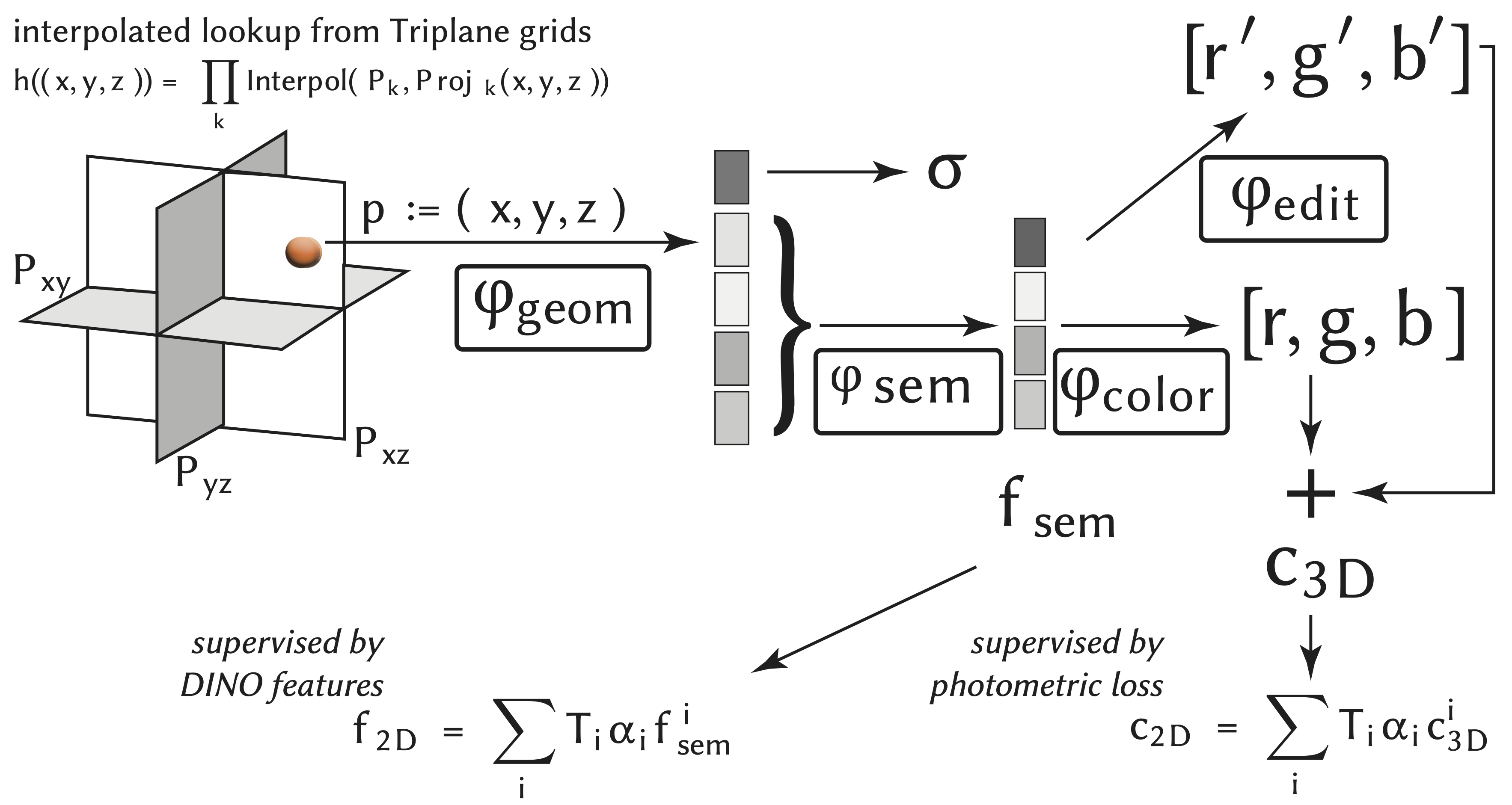Methodology


Neural Radiance Fields (NeRFs) have recently emerged as a popular option for photo-realistic object capture due to their ability to faithfully capture high-fidelity volumetric content even from handheld video input. Although much research has been devoted to efficient optimization leading to real-time training and rendering, options for interactive editing NeRFs remain limited. We present a very simple but effective neural network architecture that is fast and efficient while maintaining a low memory footprint. This architecture can be incrementally guided through user-friendly image-based edits. Our representation allows straightforward object selection via semantic feature distillation at the training stage. More importantly, we propose a local 3D-aware image context to facilitate view-consistent image editing that can then be distilled into fine-tuned NeRFs, via geometric and appearance adjustments. We evaluate our setup on a variety of examples to demonstrate appearance and geometric edits and report 10-30x speedup over concurrent work focusing on text-guided NeRF editing.


@article{10.1145/3651290,
author = {Wang, Binglun and Dutt, Niladri Shekhar and Mitra, Niloy J.},
title = {ProteusNeRF: Fast Lightweight NeRF Editing using 3D-Aware Image Context},
year = {2024},
issue_date = {May 2024},
publisher = {Association for Computing Machinery},
address = {New York, NY, USA},
volume = {7},
number = {1},
url = {https://doi.org/10.1145/3651290},
doi = {10.1145/3651290},
abstract = {Neural Radiance Fields (NeRFs) have recently emerged as a popular option for photo-realistic object capture due to their ability to faithfully capture high-fidelity volumetric content even from handheld video input. Although much research has been devoted to efficient optimization leading to real-time training and rendering, options for interactive editing NeRFs remain limited. We present a very simple but effective neural network architecture that is fast and efficient while maintaining a low memory footprint. This architecture can be incrementally guided through user-friendly image-based edits. Our representation allows straightforward object selection via semantic feature distillation at the training stage. More importantly, we propose a local 3D-aware image context to facilitate view-consistent image editing that can then be distilled into fine-tuned NeRFs, via geometric and appearance adjustments. We evaluate our setup on a variety of examples to demonstrate appearance and geometric edits and report 10-30x speedup over concurrent work focusing on text-guided NeRF editing. Video results and code can be found on our project webpage at https://proteusnerf.github.io.},
journal = {Proc. ACM Comput. Graph. Interact. Tech.},
month = {may},
articleno = {22},
numpages = {17},
keywords = {Generative AI, Interactive 3D Editing, Neural Editing, Neural Radiance Field, ProteusNeRF, Stable Diffusion Model}
}